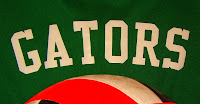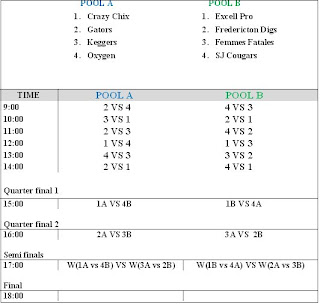
One of the biggest challenges many volleyballers face is their ability (or inability) to correctly 'read the play'.
Anticipating where the opposition's hitter is about to slam that ball - so you can move into position early - helps you get to the ball faster, and makes you a better defensive player.
But.... it's not only about reading what the opposition is doing - you also need to know what to look for on your own team - So you know 'exactly' where you should be to defend your area on the court.
So here are some specific tactics that will help you read an opposing team's hitter when playing back row defense...
Firstly; the process of reading a hitter in the back row is much the same as playing in the front row: you have to first see the hitter and the direction their approach is taking, and then the set and direction and speed at which the ball traveling.
But another important thing to keep in mind when playing in the back row is to read the block as well.
When playing in the back row, it is just as important to be 'prepared' as it is to read the hitter. As you see where the set is going and the direction the player is
facing when he or she starts to swing, you also need to be ready to play the ball off the block
If you are playing middle-back, then your first goal is to stay deep so that you can play the balls that are hit off the block and go sailing deep. Also, make sure you
take a step towards the side the set is on toward the sideline to play the cross court line shot.
If you are playing left or right-back, then make sure you are always starting by the ten foot line so you are prepared for the quick middle hit or the tip from the front row setter.
You do not release from this position until you see the ball set outside or to the opposite position.
If the ball is set to your side, then take three large, quick steps backwards on the side line. Make sure you are completely stopped and ready to move when the ball is
hit so you can make a fast reaction.
The ball could be hit off the block and you may need to jump or run after it, or the ball may be tipped, and you
will have to run and dive after it.
You will know if a tip is coming if the hitter begins to slow down his arm swing at all, or if the player is attacking a poor set that is tight to the net.
Make sure your feet are turned in slightly so you are more prepared to take that first big, explosive step toward the ball.
Otherwise, be down low and ready to take that hard shot down the line.
If the ball is set away from your side, you should release into the court by taking one big step/leap back and another one into the court. It is always important to
stay 'in the sunshine' of the ball when playing defense.
Think about the ball as being a sun, and the block is shielding the sun's light. On defense, it is important to change your position so that you are never behind the block, because you want to be ready to play the ball where there is no one else to stop it.
When taking your step into the court, make sure you are moving into an area that is not being covered by the block, or in the 'sunshine'.
Players usually hit in the direction of their approach. A player approaching the net at an angle will probably hit cross court. Players approaching more perpendicular to
the net will most likely hit down the line.
However, hitters may suddenly change the direction of their swing by hitting across their body; this is why it is important to always be in ready position and to study
the habits of each player throughout a match.
Remember, you are reacting to everything on the court, including the blockers on your own team. Just be in position, ready to react, and you can be accountable for
the space you are defending.
 Femmes Fatales Women’s Senior B Tournament
Femmes Fatales Women’s Senior B Tournament




